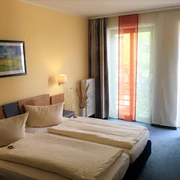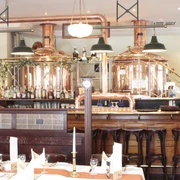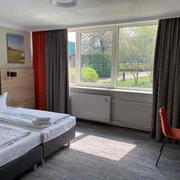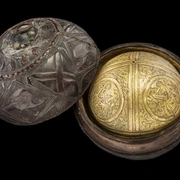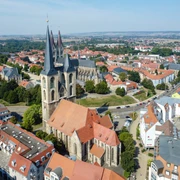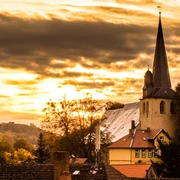The oldest parts of the Liebfrauenkirche can be dated back to the 11th century, but it acquired its current form as a three-aisled pillar basilica in the course of the 12th century.
In the centuries that followed, the church was constantly extended, for example with the addition of the baptistery in the south-west and St. Barbara's Chapel. During the Seven Years' War and under Napoleon, the choir screens, among other things, were damaged. During a devastating air raid in the Second World War, in which Halberstadt was almost completely destroyed, the Liebfrauenkirche also suffered extensive damage. However, it was restored after the war and now shines in its former glory.
The church, which has an extremely simple interior, is home to a real treasure: the choir screens, which used to separate the part of the choir that remained hidden from the general public, date from around 1200. On display are unique, life-size stucco figures of Mary, Jesus and the 12 apostles, some of which are still original. The special feature here is the depiction, as the figures are not depicted in the aloof style typical of the 12th century, but appear human and harmonious.
Other special features of the interior of the Church of Our Lady include the 13th century triumphal cross, the Chapel of St. Barbara with some preserved Romanesque frescoes and the organ.
In the centuries that followed, the church was constantly extended, for example with the addition of the baptistery in the south-west and St. Barbara's Chapel. During the Seven Years' War and under Napoleon, the choir screens, among other things, were damaged. During a devastating air raid in the Second World War, in which Halberstadt was almost completely destroyed, the Liebfrauenkirche also suffered extensive damage. However, it was restored after the war and now shines in its former glory.
The church, which has an extremely simple interior, is home to a real treasure: the choir screens, which used to separate the part of the choir that remained hidden from the general public, date from around 1200. On display are unique, life-size stucco figures of Mary, Jesus and the 12 apostles, some of which are still original. The special feature here is the depiction, as the figures are not depicted in the aloof style typical of the 12th century, but appear human and harmonious.
Other special features of the interior of the Church of Our Lady include the 13th century triumphal cross, the Chapel of St. Barbara with some preserved Romanesque frescoes and the organ.
Good to know
Openings
Wednesday to Sunday 10-17 h
October - April
Tue - Sat: 10 am - 4 pm
Sun: 11-16 o'clock
The church can be viewed from the outside at any time as it is open to the public.
October - April
Tue - Sat: 10 am - 4 pm
Sun: 11-16 o'clock
The church can be viewed from the outside at any time as it is open to the public.
Dayoff: Monday
Price info
Tour of the choir screen & tower ascent 3.00 euros per person
Author
Harzer Tourismusverband e.V.
Marktstraße 45
D-38640 Goslar
Organization
Harzer Tourismusverband e.V.
License (master data)
Harzer Tourismusverband e.V.
Nearby




